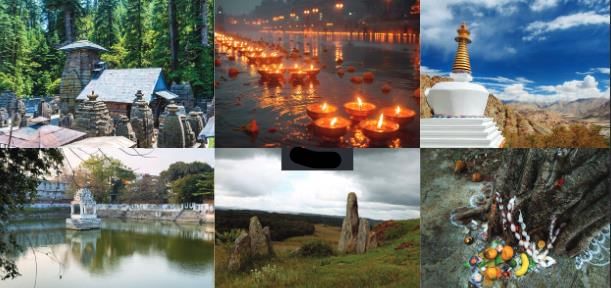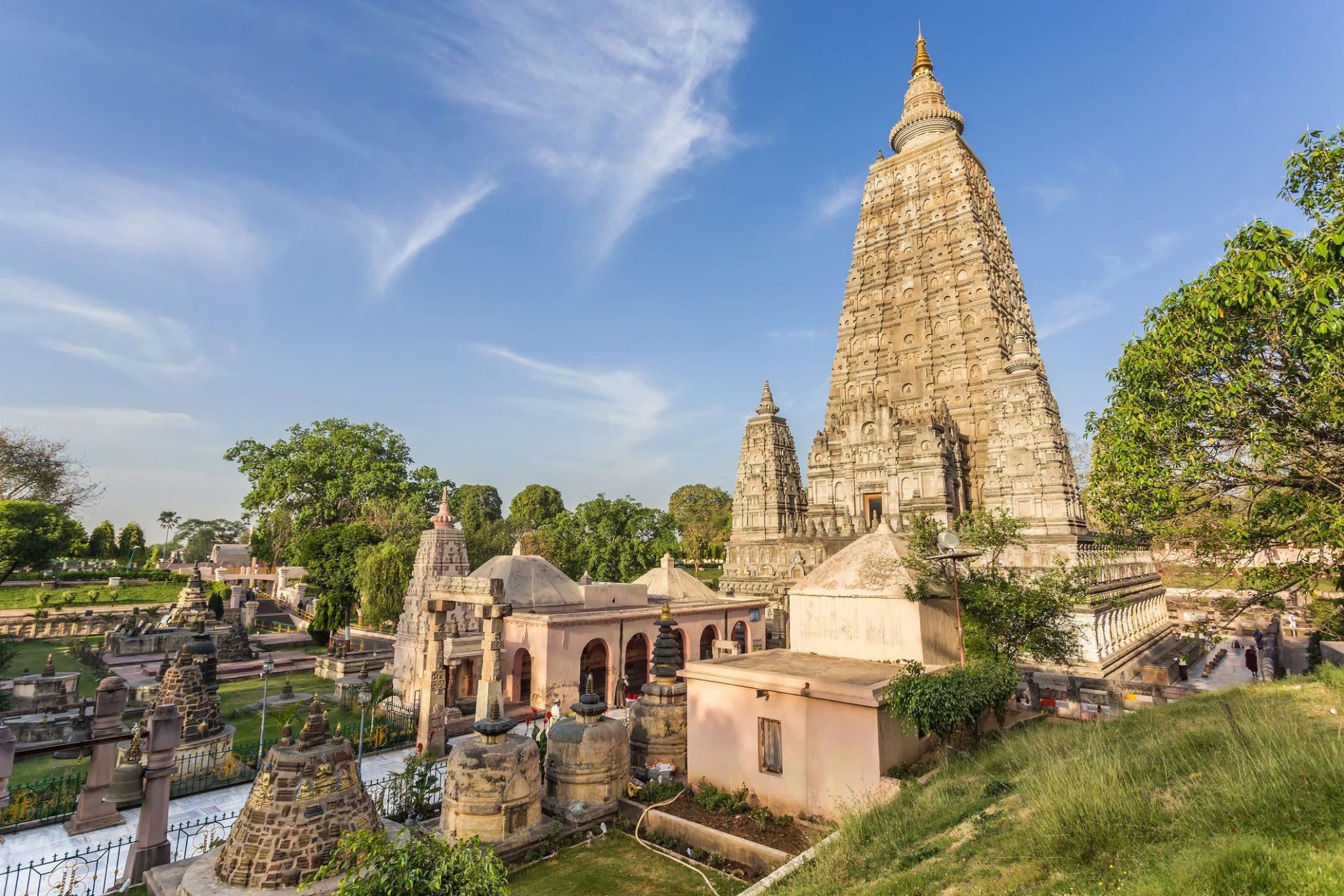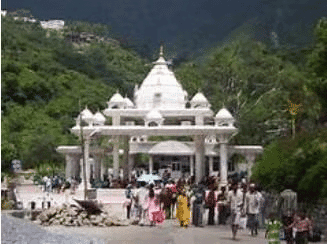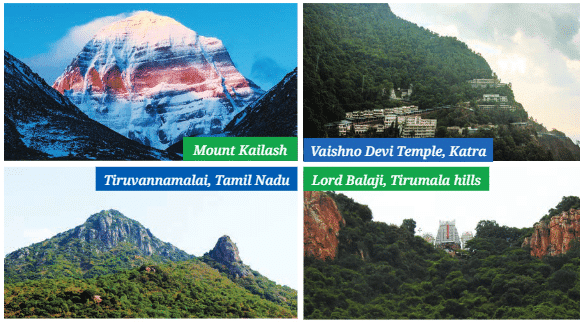NCERT Solutions for Class 7 Social Science Chapter 8 How the Land Becomes Sacred
The Big Question (Page 167)
Q1: What is ‘sacredness’?
Ans:
- Sacredness means something is considered holy, divine, or deeply respected in religious or spiritual beliefs.
- It can be a place (like a temple), a natural feature (like a river or mountain), or a ritual journey (like a pilgrimage).
- Sacredness is found in all religions in India—Hinduism, Buddhism, Islam, Christianity, Jainism, and Sikhism.
- It helps people feel connected to faith, nature, and traditions.
 Sacred Places Q2: How does the land become sacred?
Sacred Places Q2: How does the land become sacred?
Ans:
- The land becomes sacred through pilgrimage sites, holy rivers, sacred groves, and mountains linked to legends and beliefs.
- People believe that gods, goddesses, or saints lived, meditated, or performed miracles in those places.
- Nature is treated as divine—for example, rivers like the Ganga and trees like the peepul are worshipped.
- Stories, rituals, and pilgrimages passed through generations make the land holy and respected.
Q3: How do sacred sites and pilgrimage networks connect with the life and culture of the people?
Ans:
- Pilgrimages connect people across India, creating shared values, languages, and practices.
- Sacred sites support local trade, art, and crafts, helping the economy grow.
- People meet on pilgrimage routes, exchanging goods, stories, and cultural ideas.
- Festivals and rituals at sacred sites promote a sense of unity and spiritual identity among people.
 Pilgrimages
Pilgrimages
Q4: What role did sacred geography play in the cultural integration of the Indian Subcontinent?
Ans:
- Sacred geography created a network of holy places across India, helping link different regions together.
- Pilgrims from north, south, east, and west traveled across India, experiencing diverse but connected traditions.
- These shared journeys and beliefs united people despite differences in language or customs.
- Sacred geography promoted respect for nature, sustainability, and harmony between humans and the environment.
Back Questions (Page 183 & 184)
Q1: Read the following statement by a well-known environmental thinker, David Suzuki: “The way we see the world shapes the way we treat it. If a mountain is a deity, not a pile of ore; if a river is one of the veins of the land, not potential irrigation water; if a forest Our Cultural Heritage and Knowledge Traditions 8 – How the Land Becomes Sacred 183 is a sacred grove, not timber; if other species are biological kin, not resources; or if the planet is our mother, not an opportunity—then we will treat each other with greater respect. Thus is the challenge, to look at the world from a different perspective.” Discuss in small groups. What do you think this statement means? What implication does it have for our actions with respect to the air, water, land, trees and mountains around us?
Ans: David Suzuki's statement emphasizes how the way we see the world shapes the way we treat it. Here’s what it means:
Viewing Nature as Sacred:
If we see a mountain as a deity, instead of just a pile of rocks, we will treat it with respect. This makes us more aware of protecting mountains from exploitation.
If we view a river as one of the veins of the land, it becomes more than just a water source; it becomes a living part of the planet that needs to be respected and cared for.
If we see a forest as a sacred grove, rather than just timber to be cut, we will protect and preserve it, understanding its role in maintaining balance in nature.
 Sacred Places in India
Sacred Places in India
Respecting Other Species:
When we see other species as biological kin, rather than resources, we treat animals and plants with respect, understanding their role in the ecosystem.
Protecting the Earth:
If we think of Earth as our mother, rather than as a resource to exploit, we will protect the environment for future generations.
Implications for Our Actions: This perspective calls for us to protect and respect nature. For example, we should:
- Conserve forests, rivers, and wildlife.
- Reduce pollution and use resources responsibly.
- Protect the planet from harm, considering the Earth as a sacred entity.
In conclusion, this statement encourages a shift in perspective—if we view the Earth and its natural elements as sacred, we will act with respect and care towards them.
Q2: List the sacred sites in your region. Enquire into why they are considered sacred. Are there stories connected with these sacred places? Write a short essay of 150 words. (Hint: You could speak to elders in your family and community, discuss with your teacher, read books and articles, etc., to gather relevant information.)
Ans: Sacred Sites in Uttar Pradesh: In Uttar Pradesh, there are several sacred sites that hold great religious significance.
Some of these include:
Kashi Vishwanath Temple (Varanasi):
This temple is dedicated to Lord Shiva and is one of the most famous Hindu pilgrimage sites in India. It is believed that visiting this temple and taking a dip in the Ganga River helps one achieve moksha (liberation from the cycle of life and death).
Bodh Gaya:
Although Bodh Gaya is in Bihar, it is closely connected with Uttar Pradesh, especially Varanasi. It is where Lord Buddha attained enlightenment under the Bodhi tree.
 Bodh Gaya
Bodh Gaya
Sarnath (Varanasi):
Sarnath is the site where Lord Buddha gave his first sermon after attaining enlightenment. It is an important Buddhist pilgrimage site and holds deep significance for followers of Buddhism.
Prayagraj (Allahabad):
Known for the Kumbh Mela, Prayagraj is located at the confluence of three rivers—Ganga, Yamuna, and the invisible Sarasvati. It is considered one of the holiest places for Hindus, and millions of pilgrims visit it during the Kumbh Mela for spiritual cleansing.
Why These Sites Are Sacred:
These sites are connected with important religious figures (like Lord Shiva, Lord Buddha) or significant religious events (like Buddha’s first sermon in Sarnath).
They are places where people believe they can find spiritual peace and purification. For example, taking a dip in the Ganga at Kashi Vishwanath is believed to wash away one's sins.
Sacred Stories:
The Kashi Vishwanath Temple is associated with Lord Shiva and is considered a place where people can achieve moksha.
Sarnath is significant because Lord Buddha gave his first sermon here, spreading his teachings to the world.
In conclusion, sacred sites in Uttar Pradesh, like Kashi Vishwanath, Sarnath, and Prayagraj, have deep spiritual, historical, and cultural significance. They help preserve religious traditions and are places where people seek spiritual growth.
Q3: Why do you think natural elements like rivers, mountains and forests are considered sacred for the people? How do they contribute to our lives?
Ans: Sacredness of Natural Elements: In many cultures, especially in India, natural elements like rivers, mountains, and forests are considered sacred.
Here’s why:
Rivers as Sacred:
Rivers like the Ganga, Yamuna, and Godavari are considered goddesses in Hinduism. Rivers are life-giving, providing water for drinking, agriculture, and other daily needs.
These rivers are worshipped, and people believe that visiting them and bathing in their waters can help purify the soul and wash away sins.
Mountains as Sacred:
Mountains are often seen as the abodes of gods. For instance, Mount Kailash is sacred to Hindus, Buddhists, and Jains. It is believed to be the home of Lord Shiva.
Vaishno Devi Temple in Jammu and Kashmir is located on a mountain, symbolizing the path to the divine. The journey to such temples is considered a spiritual pilgrimage.
 Vaishnodevi Temple
Vaishnodevi Temple
Forests as Sacred:
Many tribal communities in India, such as the Toda people of Tamil Nadu, consider certain forests and trees sacred. These forests are often associated with deities or spirits and are considered places where humans should not harm nature.
The concept of sacred groves involves protecting certain forests because they are seen as the abodes of deities.
Contribution to Our Lives:
Rivers: Provide water for daily life, support biodiversity, and are considered life-givers. They are crucial for the agriculture of the region.
Mountains: Regulate the climate and provide water sources (rivers originate from mountains). They also hold spiritual significance for many religious traditions.
Forests: Provide wood, medicinal plants, and support wildlife. They also play a crucial role in climate regulation by absorbing carbon dioxide.
In conclusion, these natural elements are considered sacred because they provide essential resources for life, and they are believed to have divine connections that help maintain the balance of nature. Char Dhams
Char Dhams
Q4: Why do people visit a tīrtha or other sacred sites?
Ans: People visit tīrthas or sacred sites for several reasons, including spiritual growth, religious obligations, and personal fulfillment.
Here’s why:
- Spiritual Significance: Pilgrims visit tīrthas to purify their soul and attain moksha (liberation). Sites like Bodh Gaya (where Buddha attained enlightenment) or Vaishno Devi (where devotees worship the goddess) are considered places where one can connect with the divine.
- Religious Duty: Many religious traditions, especially in Hinduism, require followers to visit certain sacred sites as part of their religious practice. For example, visiting the Kumbh Mela or Haridwar is part of a religious duty for many Hindus.
- Seeking Blessings: People visit sacred places to seek blessings for health, wealth, and well-being. Pilgrims hope to receive divine grace at these sites.
- Cultural Connection: Sacred sites connect people with their religious and cultural heritage. Visiting these sites helps strengthen cultural identity and preserves traditions.
In conclusion, people visit tīrthas for spiritual, religious, and personal reasons. These visits are important for individual spiritual growth, religious fulfillment, and fostering a sense of cultural unity.
Q5: How did the ancient pilgrimage routes help in fostering trade during those times? Do you think the sacred sites help in developing the economy of the region?
Ans: Role of Pilgrimage Routes in Fostering Trade: Ancient pilgrimage routes were not just used for religious purposes but also played an important role in promoting trade and cultural exchange across India. Here's how:
- Overlapping Trade and Pilgrimage Routes: Many pilgrimage routes were also trade routes, used by merchants to transport goods between regions. For example, the routes leading to places like Varanasi and Haridwar also served as commercial corridors, allowing traders to exchange goods such as spices, textiles, and coins.
- Exchange of Goods: Pilgrims, while traveling on these routes, would buy food, clothing, and other essentials from local markets. Traders also sold goods like precious stones, cotton, and sandalwood, contributing to the local economy.
- Cultural Exchange: Pilgrims from different regions would meet along the routes, facilitating the exchange of ideas, cultural practices, and traditions. This contributed to the cultural integration of the Indian subcontinent.
- Economic Impact: The influx of pilgrims into sacred sites boosted the local economy by increasing demand for goods and services. Pilgrims also contributed to the growth of markets and trade hubs.
In conclusion, the ancient pilgrimage routes helped foster trade by connecting merchants and pilgrims, facilitating the exchange of goods, ideas, and culture, and supporting the local economies of the regions along the way. Sacred Mountains
Sacred Mountains
Q6: How do sacred places influence the culture and traditions of the people living near them?
Ans: Influence of Sacred Places on Culture and Traditions: Sacred places have a significant impact on the culture and traditions of the people living nearby. Here’s how:
Religious Practices: Sacred places are often the center of religious rituals, including prayers, festivals, and pilgrimages. For example, the Kashi Vishwanath Temple in Varanasi influences the daily lives of people by promoting Hindu religious practices and rituals.
Cultural Identity: Sacred sites help foster a sense of cultural identity. For example, the Vaishno Devi Temple is a symbol of pride and spiritual connection for the people of Jammu and Kashmir, helping to reinforce their cultural and religious identity.
Festivals and Celebrations: Many sacred places are associated with religious festivals that form a significant part of the local culture. For example, Kumbh Mela in Prayagraj brings millions of pilgrims together and is a major cultural and religious event in India.
Art and Architecture: Sacred places often lead to the development of art and architecture. The presence of temples, shrines, and pilgrimage routes often inspires local artisans and architects, influencing local crafts and building styles.
In conclusion, sacred places play a crucial role in shaping the culture, traditions, and way of life of people living near them. They are centers for religious practices, help preserve cultural identity, and influence local traditions, art, and architecture.
Q7: From the various sacred sites of India, select two of your choice and create a project explaining their significance.
Ans:
Kashi Vishwanath Temple (Varanasi): The Kashi Vishwanath Temple is one of the holiest places for Hindus. It is dedicated to Lord Shiva and is believed to be a gateway to moksha (liberation from the cycle of birth and death). The temple is located in Varanasi, one of the oldest cities in the world, and is a major pilgrimage site for Hindus. Pilgrims visit the temple to seek blessings and purification by taking a dip in the Ganga River nearby.
Bodh Gaya: Bodh Gaya is an important pilgrimage site for Buddhists because it is where Lord Buddha attained enlightenment under the Bodhi tree. The Mahabodhi Temple is located here and attracts millions of Buddhist pilgrims every year. The site represents the core teachings of Buddhism and the path to nirvana (freedom from suffering).
Q8: What is the two-fold significance of a tīrthayātrā or a pilgrimage?
Ans: Two-Fold Significance of a Tīrthayātrā (Pilgrimage):
Spiritual Significance: A pilgrimage is an inner spiritual journey that helps pilgrims purify their soul, seek divine blessings, and strengthen their faith. It is believed that visiting sacred places and performing rituals along the journey brings the person closer to the divine.
Cultural and Social Significance: Pilgrimages also have cultural and social significance as they help connect people from different regions and cultures. They promote cultural integration and help maintain religious traditions. Pilgrims often interact with people from various backgrounds, exchanging ideas, beliefs, and practices.
In conclusion, a tīrthayātrā serves both spiritual and cultural purposes, helping individuals grow spiritually while also promoting cultural connections across regions.
|
23 videos|204 docs|12 tests
|
FAQs on NCERT Solutions for Class 7 Social Science Chapter 8 How the Land Becomes Sacred
| 1. What are the main themes discussed in "How the Land Becomes Sacred"? |  |
| 2. How do different cultures perceive sacred land? |  |
| 3. What role does history play in the sanctification of land? |  |
| 4. Can you give examples of places that are considered sacred in different religions? |  |
| 5. How does the article suggest we can respect and protect sacred lands? |  |





















